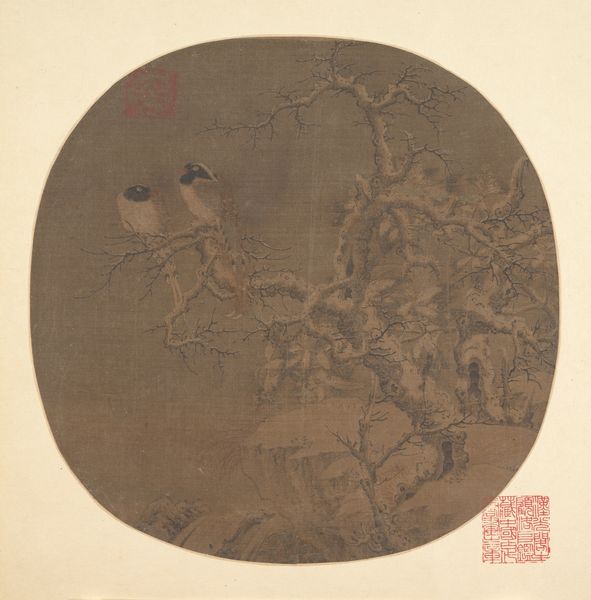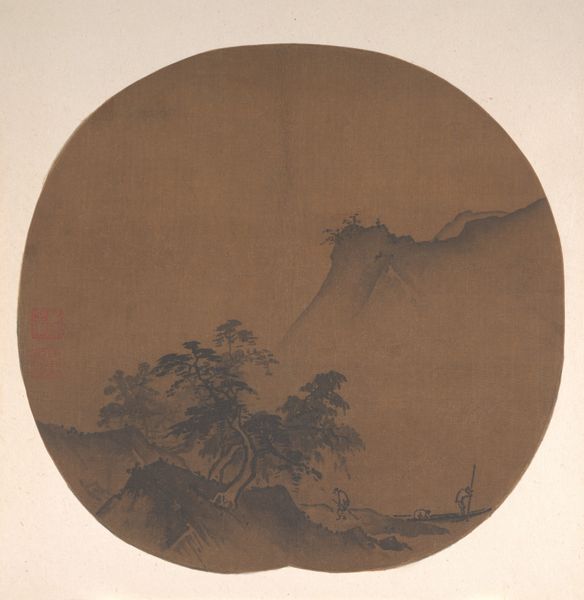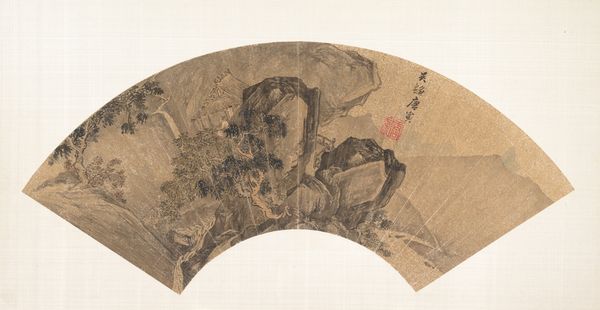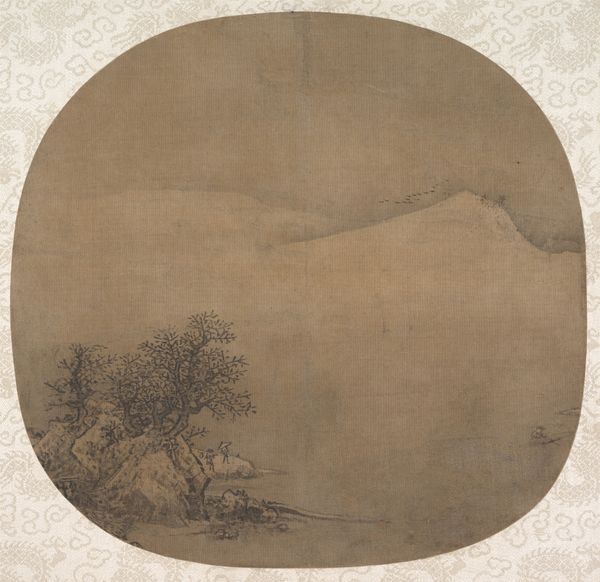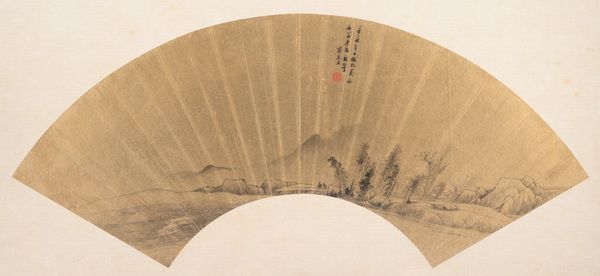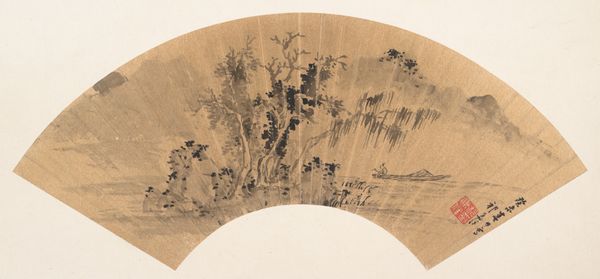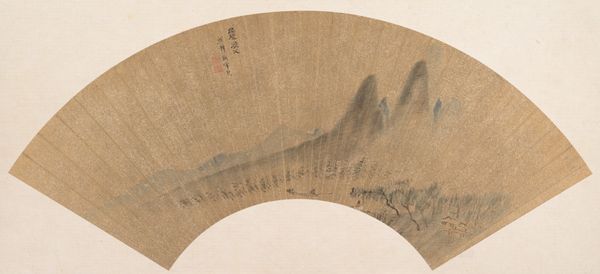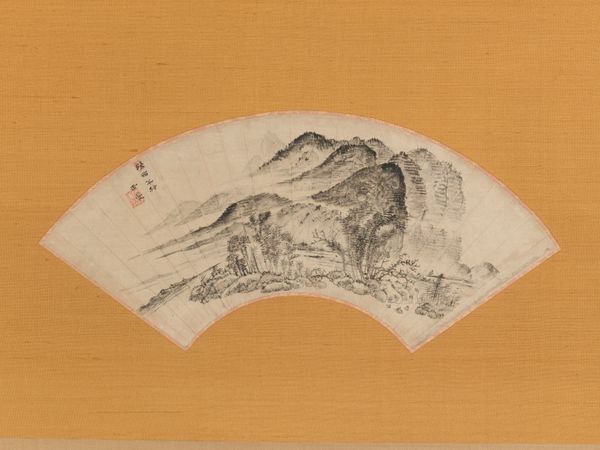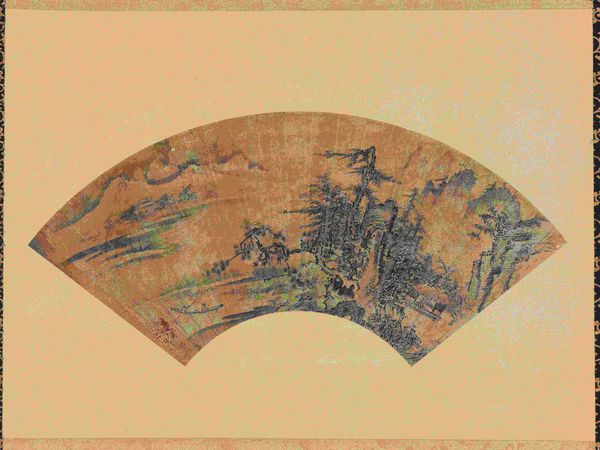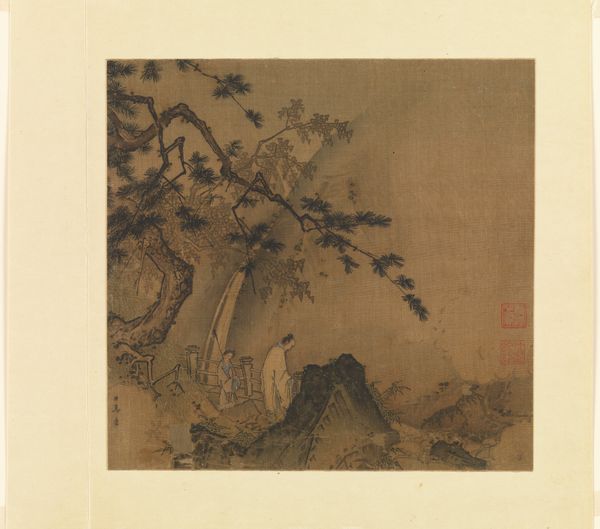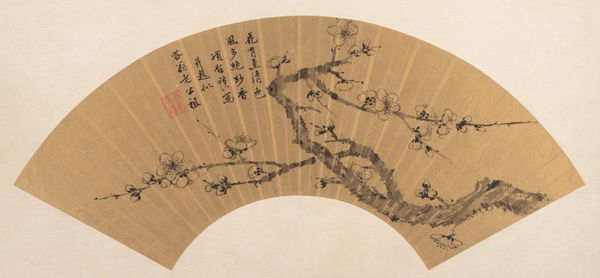
painting
#
medieval
#
water colours
#
painting
#
asian-art
#
landscape
#
repetition of white
#
20_southern-song-dynasty-1127-1279
#
china
#
watercolor
Dimensions: 8 3/4 x 8 13/16 in. (22.2 x 22.4 cm)
Copyright: Public Domain
Editor: This artwork, called "Waves in the Moonlight," comes from China during the Southern Song Dynasty. The medium looks like ink and watercolor on silk, and it's currently at the Metropolitan Museum of Art. What strikes me most is how muted the colors are; it almost feels monochromatic. What stands out to you in this piece? Curator: Given its probable function as a scholar's object, it’s worth thinking about what informed its production. The anonymous artist most likely engaged in extensive training in calligraphy as the basis of his mark making here, but we might also wonder about the availability of specific pigments and types of silk. Were these considered luxury goods even then? Also, the use of roundel format, a popular presentation method – I’d be curious to investigate how the very act of painting on that shaped the imagery. Editor: That’s a good point about the roundel format dictating the composition. And it raises an interesting question of whether silk impacted cost and the artistic decisions in its materiality versus paper. Curator: Precisely! And don't overlook the likely social function of this as part of an elite sphere of artistic production. This image would circulate in the hands of other wealthy collectors, conferring status on the owner, the painter, and indeed, the wave itself! How might its reception shift depending on that circuit of viewership and ownership? Editor: I hadn't thought about it like that. The value shifts depending on its context and audience. It sounds like the artwork acts as a symbolic marker, influencing social standings through a web of creation, access, and circulation. Curator: Exactly! And those relationships embedded in a luxury object tells its real story, maybe even more than just an image. Editor: Thanks for that perspective, I’m viewing these kinds of artworks with different eyes now! Curator: My pleasure! It's crucial to remember art exists within—and is shaped by—its material conditions.
Comments
No comments
Be the first to comment and join the conversation on the ultimate creative platform.
